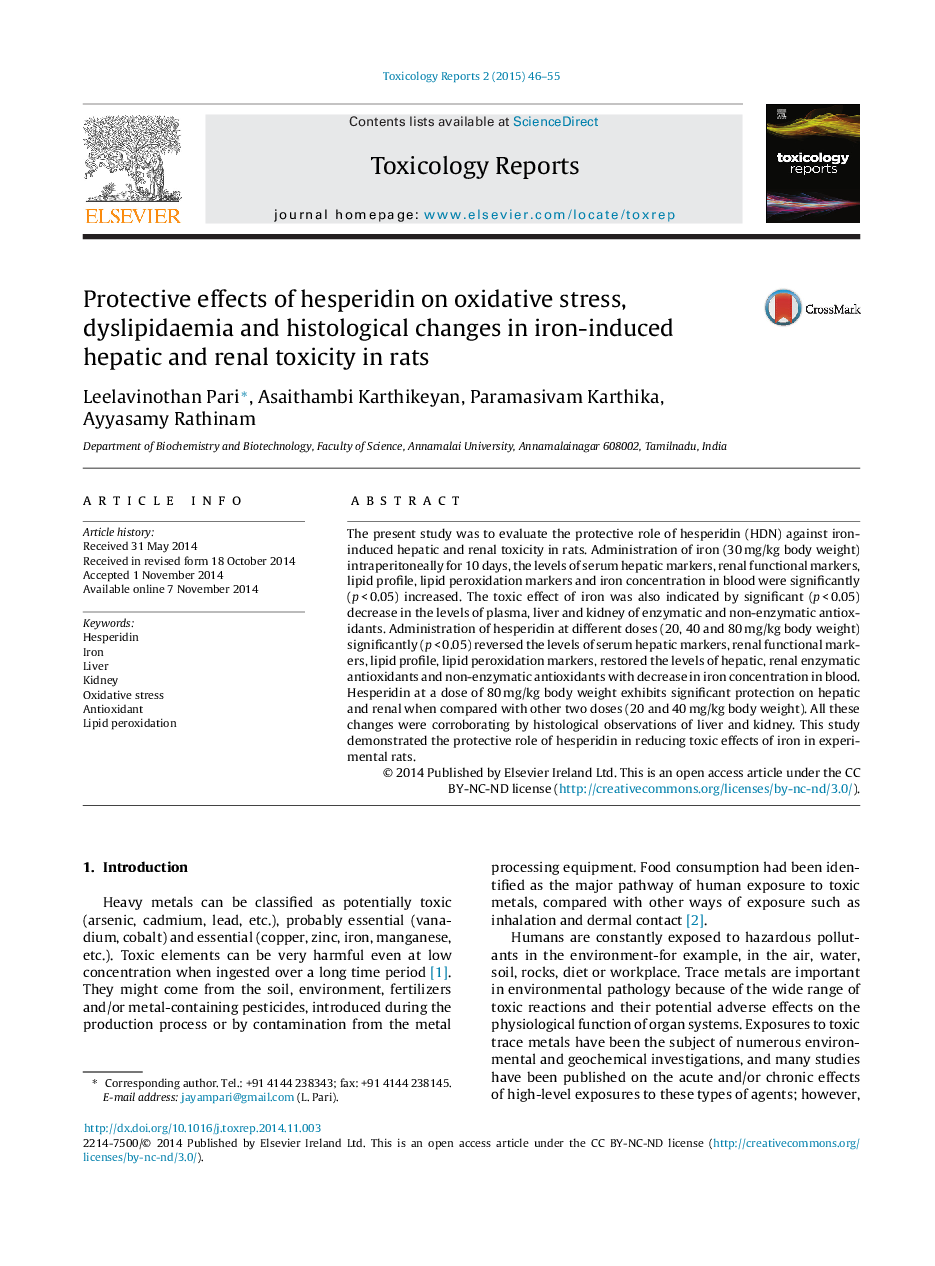| Article ID | Journal | Published Year | Pages | File Type |
|---|---|---|---|---|
| 2572191 | Toxicology Reports | 2015 | 10 Pages |
•Evaluate the effects of hesperidin in iron induced hepatic and renal function.•Hesperidin has significant antioxidant property.•Hesperidin shows reduced lipid profile.•Administration of hesperidin averts oxidative stress in liver and kidney tissues.•Rescue the liver and kidney tissues from pathology.
The present study was to evaluate the protective role of hesperidin (HDN) against iron-induced hepatic and renal toxicity in rats. Administration of iron (30 mg/kg body weight) intraperitoneally for 10 days, the levels of serum hepatic markers, renal functional markers, lipid profile, lipid peroxidation markers and iron concentration in blood were significantly (p < 0.05) increased. The toxic effect of iron was also indicated by significant (p < 0.05) decrease in the levels of plasma, liver and kidney of enzymatic and non-enzymatic antioxidants. Administration of hesperidin at different doses (20, 40 and 80 mg/kg body weight) significantly (p < 0.05) reversed the levels of serum hepatic markers, renal functional markers, lipid profile, lipid peroxidation markers, restored the levels of hepatic, renal enzymatic antioxidants and non-enzymatic antioxidants with decrease in iron concentration in blood. Hesperidin at a dose of 80 mg/kg body weight exhibits significant protection on hepatic and renal when compared with other two doses (20 and 40 mg/kg body weight). All these changes were corroborating by histological observations of liver and kidney. This study demonstrated the protective role of hesperidin in reducing toxic effects of iron in experimental rats.
